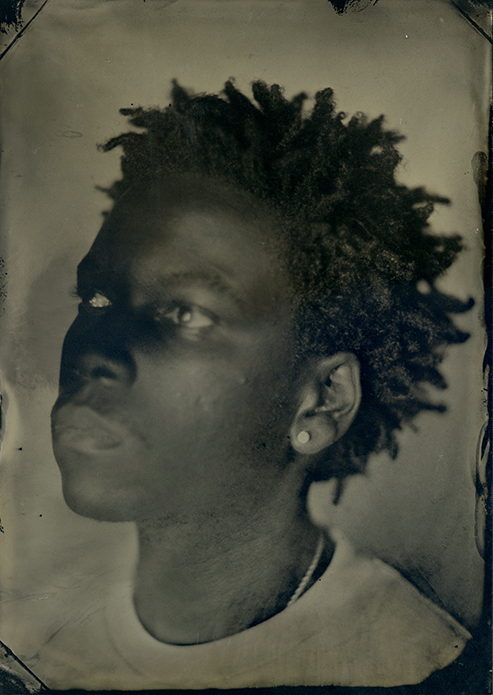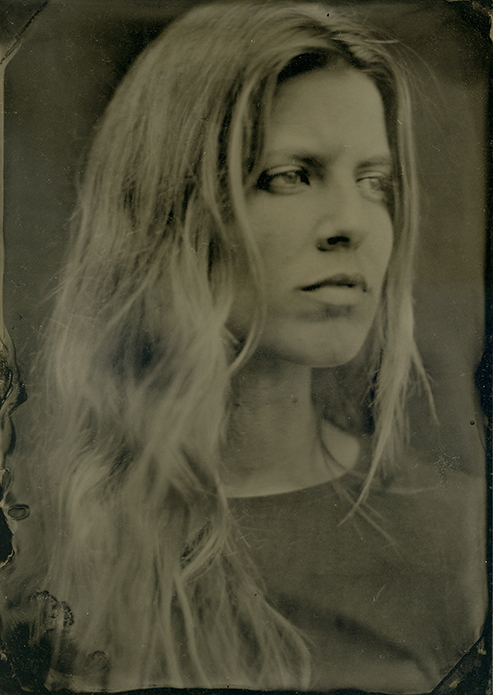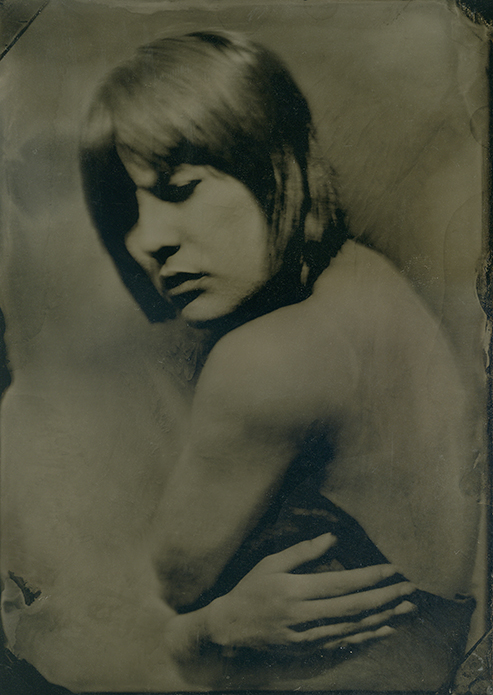by Aboubacar Kante
The collodion process, commonly known as wet plate, is one of the many historical processes that produce beautiful images and are gaining popularity in today’s digital age. I recently had the chance to learn the technique from Taylor Bareford, a SCAD alumnus with a M.F.A. in photography.
Wet plate photography is an early photographic process that started being used in the mid-19th century as a cheaper alternative to the daguerreotype process. It’s one of the more finicky, time-consuming and surprisingly dangerous alternative-photographic processes. It requires the use of toxic chemicals like silver nitrate, which can cause blindness from direct contact with the eyes. It can also stain your hands if handled improperly — I am currently experiencing the side-effects of the latter.
The camera used to make the image resemble most large-format cameras. However, one process-specific difference is found on the back of the camera. These cameras are fitted for a large film holder that is about the width of three or four traditional holders. Like most view cameras, it has one dark slide. Instead of being loaded through the bottom, it is loaded through a door on the back like that of a 4×5 or 8×10 camera. Another difference that surprised me was the size of the lens — it was huge. Bareford’s was equipped with a 15-inch, f4.3 lens made in the early 20th century by the Brooklyn Optical Company.
Silver nitrate requires ultraviolet light to obtain an exposure. In order to keep our exposure time under 10 seconds, we shot at midday where the sunlight was at its brightest. During our shoot, Bareford took several awesome photographs of me. After being photographed several times, it was my turn to shoot a plate. I was able to get an exposure of him wearing his wife’s cowboy hat with a wild rag loosely tied around his neck.
Becoming familiar with how to handle large format cameras and mastering how to pour the chemicals was a bit tricky. After exposing the image, we rushed into the darkroom where we began processing. It was an amazing opportunity to witness my image clarify in the fixer within just a few seconds. The experience was truly one that I’ll never forget.
To see more of Bareford’s work, visit his website here. Bareford is currently working on a series of portraits using the wet plate process and prepping for his solo exhibition scheduled for Monday, Aug. 7 through Sunday, Sept. 17 at the Janet S. Day gallery.






























